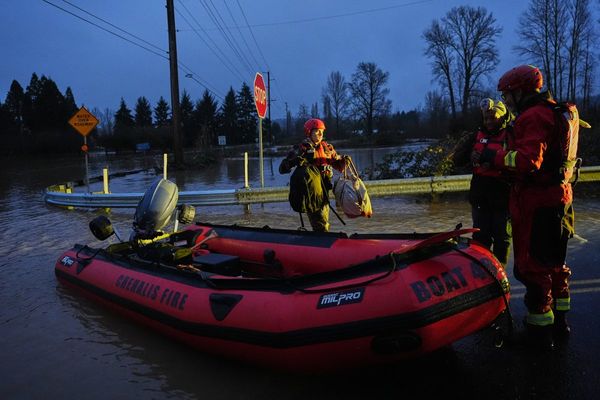
When Prof Miriam L Diamond, a leading international expert on chemical contaminants in the environment, and her team of students and trainees at the University of Toronto started testing new children’s mattresses three years ago, she was wholly unprepared for what they discovered. “We found a cornucopia of chemicals that simply do not need to be there,” she says. “We were shocked. We found flame retardants that aren’t even required by flammability standards.”
Diamond and her team have tested many different everyday products – from cosmetics and popcorn bags to school uniforms. She says they prioritise products with high potential for direct human exposure, especially in children.
Her 2022 work examining school uniforms found many contained PFAS (per- and polyfluorolkyl substances), which are often referred to as “forever chemicals” because they don’t break down easily in the environment or human body. The study, released in collaboration with the Green Science Policy Institute, added to the growing body of evidence that informed California’s legislative process to restrict forever chemicals in textiles. A prime example, she says, of research that translates into real-world change.
Among the cocktail of chemicals in the mattresses Diamond and her students examined were plasticisers, additives that make materials softer or more flexible. They’re linked to health concerns – an earlier study found that children exposed to a particular type of plasticiser had higher rates of asthma. A safer group of chemical plasticisers known as non-phthalate plasticisers can be used instead.
Babies and toddlers are especially vulnerable to these pollutants. “They can sleep up to 18 hours a day, breathing air right above the mattress surface,” Diamond explains. “Their higher breathing rates and greater skin surface area (relative to their body weight) mean they can inhale or absorb chemicals more readily than adults. All of this leaves them disproportionately exposed.”
Diamond and her team focus on PFAS because of their persistence and well-documented health effects. “What are these forever chemicals doing in school uniforms? Do we really need stain-proof clothing for kids at the cost of their long-term health?”
Diamond’s mission is deeply personal as well as professional. As both a mother and grandmother, she sees her research as a duty to protect the most vulnerable. And as a professor at a publicly funded university, she believes it is her responsibility to work for the common good. “I take that responsibility very seriously,” she says. “The university is a special place that provides the opportunity to uncover the questions we didn’t know we needed [to ask]. We ask questions the public doesn’t even know to ask.”
The University of Toronto provides Diamond with both the “material support to do the science” and “the professional latitude” to bring it to the public’s attention. She considers that a precious freedom that not all researchers experience, noting that academics elsewhere increasingly face constraints on the research questions they can ask and on their ability to communicate openly.
“I can speak the truth in an unfettered way because of the protection afforded by my position – that academic freedom is incredibly precious, especially as we see it being undermined elsewhere,” she says. “In a democracy, academic freedom is vital. It allows us to inform the public and advocate for the clean, healthy environments everybody has a right to, not just the privileged.”
Beyond the lab, Diamond has contributed to international policy development, advising countries with limited technical capacity on chemical management and pollution prevention. “All the science in the world doesn’t matter unless you communicate it,” she adds. To that end, Diamond works closely with advocacy groups to ensure her findings reach parents, policymakers and manufacturers. It’s about targeting communication so it promotes positive change. “You draw attention to manufacturers so they reformulate, to regulators so they set safer standards, and to consumers so they can make more informed choices.”
Her current research turns to the built environment, investigating harmful chemicals in outdoor paints, sealants and textiles – materials that can release contaminants into air, soil and water. “We asked where PFAS in drinking water might come from,” she says. “These chemicals are lost from buildings over time, but they aren’t really ‘lost’ – they’re just found somewhere else. The fact that around half of the samples we tested contained no PFAS shows substitution is possible. So the question is, why are they still being used?”
Her work has made international headlines not only for its scientific significance but also for its social and policy influence. It’s work she feels privileged to do and considers possible because of the University of Toronto’s commitment to research that serves society. Despite pushback from industry – and particularly from sectors reliant on PFAS – Diamond sees her role as countering resistance with evidence.
Her goal remains clear: to identify where harmful chemicals are unnecessary and work with stakeholders to remove them from the environments where people live, learn and play. “That’s the only way we’ll protect people’s health and the environment we all share.”
Meet the extraordinary community at the University of Toronto that’s pushing the boundaries of what’s possible







